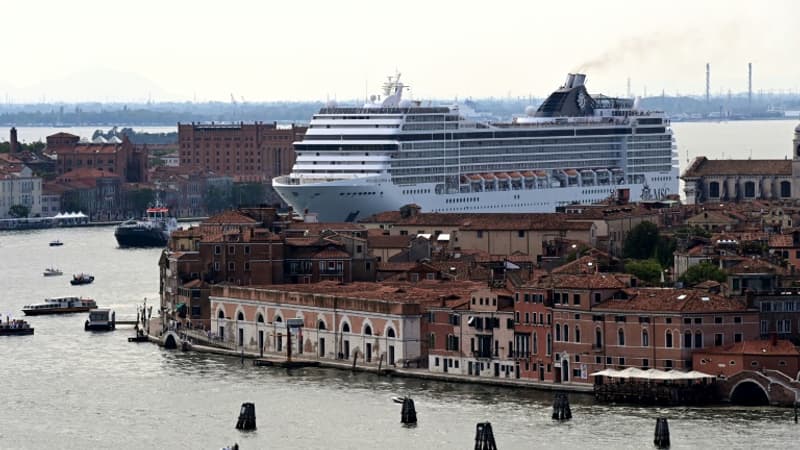The aversion of many tourist cities to cruise ships – ever larger ships – is gaining momentum around the world. Accused of polluting and of participating in denounced mass tourism, they are beginning to be banned from certain ports or are in the process of being banned.
The last one, the one in Amsterdam. The municipal council of the Dutch city on Thursday approved a motion to close a major terminal dedicated to these ships in the center of the city.
Amsterdam did the same with Venice, which was the first major tourist destination to apply this ban in 2021.
Complicating the life of companies
In fact, a law prohibits cruise ships of more than 25,000 tons from entering the San Marco basin and the Giudecca canal in the center of the city. Enough to prohibit 95% of cruise ships from this direct access. Now they must dock at a slightly more distant port.
Other cities that do not have the legislative capacity to ban these ships have decided to make life more difficult for shipping companies to limit the effects of mass tourism.
This is the case of Monterey, in California (United States), which abolished drop-off services, thus forcing operators to take charge of them and therefore to pay for them.
Same will in Bar Harbor, Maine, still in the United States. Starting in 2024, only 1,000 passengers and crew will be able to disembark each day. This is three times less than the number of passengers on a classic cruise.
In Barcelona, Spain, new measures under discussion could halve the number of people landing in the Catalan city (200,000 tourists per month during high season).
pressure and requests
In many other tourist cities, the pressure of the inhabitants on the visible effects of pollution is getting stronger, as in Marseille.
Last June, some fifty activists from this group came to “pick up” the largest ship in MSC Cruisesthe World Europe, with the slogan “Cruise, we don’t want it”.
Opponents of cruise ships point to a study by AtmoSud which states that maritime activities are responsible for 39% of nitrogen dioxide (NOx) emissions in the metropolis of Marseille, just behind road traffic (45%).
Mayor Benoît Payan has launched a petition against maritime pollution challenging the State and the International Maritime Organization (IMO) while the NGO “Stop Croisières” has filed a complaint against X for endangering others and ecological damage.
A financial windfall you’re debating
In Corsica, a petition calls for a ban on this mass tourism, especially in the port of Ajaccio. A petition supported by the autonomist president of the Executive Council Gilles Simeoni:
In Nice, local residents already have a ship that is too noisy and polluting to leave the port.
But for some elected officials or port managers, limiting access to cruise ships means risking seeing the tourist manna collapse. However, the importance of this manna is debated, as in Amsterdam, for example.
Same debate in Barcelona. “40% of cruise ships stop for four hours. They do not provide any economic benefit to the city, thousands of people disembark, cause major mobility problems and leave. This is an industry that we must limit,” he told Times Ada Colau, mayor of the city.
According to a study conducted in Norway (where many cruise ships visit the fjords) and cited by euro news, up to 40% of cruise passengers never leave the ship. And those who go ashore spend on average less than 23 euros.
The sector highlights its commitment to greening
The industry obviously questions these conclusions. And it highlights its efforts to limit the effects of pollution (and comply with the new European regulations in particular). CLIA, the international cruise line association, has thus committed to reducing carbon emissions by 40% by 2030.
Companies are renewing their fleets, with ships powered by LNG (liquefied natural gas), less polluting than marine fuel but still derived from fossil fuels, equipped with powerful filters in their chimneys…
In the ports, the electrification of the docks also stands out. In Marseille, Hervé Martel, president of the port’s board of directors, highlights the work to generalize this electrification, which allows ships to turn off their engines.
It must be said that according to a study by Ademe, the Environment and Energy Management Agency, a cruise ship docked for one hour emits as much as 30,000 vehicles traveling at 30 km/h. This electrification is also underway in Corsica and Toulon.
I am not sure that this is enough to calm the increasingly strong discontent of residents for whom these boats, no matter how hard they try, are ecological aberrations and support for less and less accepted mass tourism.
Source: BFM TV


